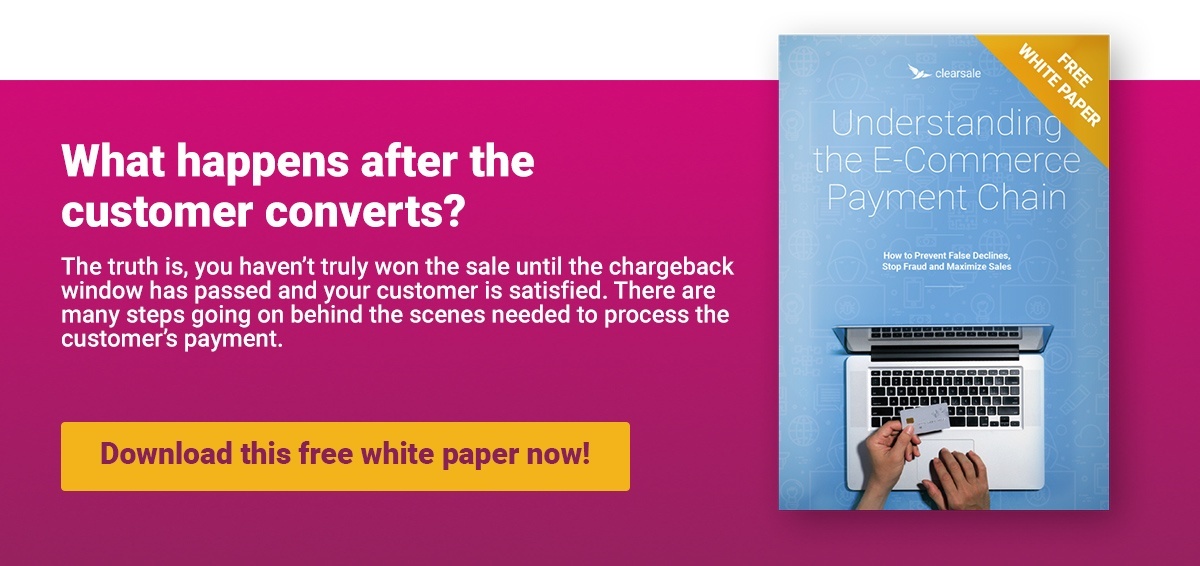Small Average Ticket Totals? Beware of Hidden TC40 Claims
What Are TC40 Claims?
Each time a customer makes a fraud claim on a card-not-present transaction, within days (or even hours), the card-issuing bank creates a TC40 claim for the transaction. The data in the claim includes details about the merchants, the banks involved in the transaction, the date and location of the transaction, and the currency of the transaction.
Issuers then compile this data on TC40 claims into specific reports for each type of credit card – for MasterCard transactions, the issuer will create a System to Avoid Fraud Effectively (SAFE) report, while for Visa transactions, the issuer will create a Risk Identification Service (RIS) report. The issuer then shares the reports with other issuing banks, acquiring banks, and card brands.
Although individual merchants can request copies of these reports, they may not always receive them due in part to the size of the data files.
How Do TC40 Claims Affect Merchants?
It’s easy to confuse TC40 claims (claims of credit card fraud) with chargebacks (customer-initiated refund requests). But not every TC40 claim results in a merchant chargeback. In fact, not every TC40 claim even has a direct financial impact for the merchant. Counterintuitively, this is why TC40 claims can be so dangerous for merchants.
Many credit card issuers won’t bother processing chargebacks for transactions under a certain value (less than $20, for example). Usually this happens when the cost of processing the chargeback is more than the issuer would recoup from the chargeback itself; in these cases, processing the chargeback isn’t worth their time, effort and expense.
If no chargeback is filed, and if the merchant doesn’t specifically request the TC40 report from the card issuer, the merchant may have no idea that fraud has even happened.
If the fraud is small and infrequent, this may not be a problem. But what about a merchant that is specifically targeted by fraudsters?
It’s not uncommon for fraudsters to purchase thousands of credit card numbers on the dark web. These criminals need to test the validity of these card numbers quickly. A preferred method to do this easily is to submit small transactions (e.g., $1.99) to e-commerce merchants; if the transaction goes through, the fraudster knows the card number is good – and if the transaction is small enough, most credit card holders won’t even notice. Even if the card holder does file a fraud claim, because the transaction is so small, the card issuer may decide not to process it as a chargeback and instead simply write-off the losses and add it to their TC40 report.
Now think about what happens if this scenario happens at scale. When fraudsters use bots to test card numbers, a merchant may be subjected to hundreds or even thousands of these small tests in a very short period of time. And if the card issuer isn’t processing chargebacks for each of these small tests, the merchant may have no idea what is happening until it’s too late.
This can create a host of problems, including:
Problems with the Credit Card Processing Account
If excessive TC40 claims cause a merchant’s risk rating to rise too high, an issuer may start fining that merchant as a way to recoup losses. These issuers may even cut ties with the merchant and stop processing transactions altogether — even though the merchant’s chargeback rates still fall within acceptable levels.
Double Refunds
Merchants who do access their SAFE and RIS reports and voluntarily process refunds for their TC40 claims can end up double-refunding their customers: once on the merchant’s own terms and again if the dispute escalates into a chargeback. If the claim escalates, merchants are also subjected to the additional fines, fees and penalties associated with chargebacks.
Declines on All Small-Value Orders
If the number of TC40 claims against a merchant reaches a certain threshold, card issuers will start declining small-value transactions — even legitimate ones. This causes the merchant to lose valuable revenue and increases the frustration level of customers. In fact, merchants often learn about TC40 claims when they receive complaints from customers about their credit cards being declined.
How Merchants Can Protect Against TC40 Claims
TC40 reports aren’t always easy to access, but the data they contain can be used to help improve an e-commerce merchant’s chargeback prevention strategy. When merchants get a SAFE or an RIS report, they should:
- Review the raw reporting data.
- Research each claim, matching it with transaction information in their database.
- Mark the corresponding transactions as fraudulent.
- Consider refunding these transactions to avoid costly chargebacks.
When e-commerce merchants mark these TC40 claims as fraudulent, their fraud prevention system can more quickly and effectively identify and prevent similar fraudulent transactions in the future.
But because issuers and processors provide TC40 data reports at their discretion, e-commerce merchants often don’t realize what’s happening. That’s why it’s critical for these merchants to have other solid strategies in place to prevent chargebacks, reduce fraud, and protect revenue and reputation.
Contact the experts at ClearSale today to learn more about TC40 data and how it might be affecting your business. We’ll share why our Guaranteed Chargeback Insurance means you’ll never pay for chargebacks again, improving your revenue and increasing customer satisfaction.
to learn why companies around the world trust the ClearSale solution to stay on top of the latest trends and help them grow their business and reduce risk.
 Sarah Elizabeth
Sarah Elizabeth
